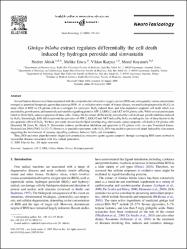Lack of association between endothelial nitric oxide synthase glu298Asp variation, visceral obesity and insulin related phenotypes in Turkish type 2 diabetic patients.
Künye
Bayoglu B, Ersoz M, Cagatay P, Ciftci C, Susleyici Duman B. Lack of association between endothelial nitric oxide synthase glu298Asp variation, visceral obesity and insulin related phenotypes in Turkish type 2 diabetic patients. Acta Medica Academica 2008;37(2):91-98Özet
Nitric oxide (NO) is an endothelium derived relaxing factor(EDRF) important in regulating heart-vessel physiology. Theobjective of this study was to investigate whether the eNOSgene Glu298Asp variation influenced the lipid parameters,visceral obesity, insulin related phenotypes and type 2 diabetesmellitus (T2DM) development, for the first time in a Turkishstudy group. We analyzed the the eNOS gene Glu298Aspgenotype frequencies in 115 type 2 diabetic and 68 healthycontrol subjects. Serum lipids and insulin-related phenotypeswere also analyzed. No significant difference for genotypicfrequencies was observed for the Ban II (Eco241) restrictionsite in T2DM patients as compared to controls. eNOSGlu298Asp polymorphism was not found to affect visceralobesity and insulin related phenotypes. However, T2DM patientswith Asp/Asp genotype were found to have lower hepaticinsulin sensitivity (HIS) in comparison to Glu/Glu. Inhealthy controls, the insulin and HOMA levels were foundto be lower in Glu/Asp genotype with respect to Glu/Glugenotype carriers (p>0.05). In T2DM patients, visceral obesitywas observed in higher frequencies with Asp/Asp genotype,in comparison to Glu/Glu genotype. eNOS Glu298Asppolymorphism was not found to affect serum lipid levels inthe T2DM group. However in the control group, lower serumapoB levels were observed in Asp/Asp genotype carriers incomparison to Glu/Glu genotype (p ≤ 0.05). The eNOS geneGlu298Asp polymorphism was not found to be associatedwith T2DM in the present study group. Although not significant,since the eNOS Glu298Asp genotypes were found tobe related to HIS, insulin, HOMA and visceral obesity in thepresent study, further studies on larger samples are needed toexplore the exact role of eNOS Glu298Asp polymorphism ininsulin related phenotypes and visceral obesity.


















